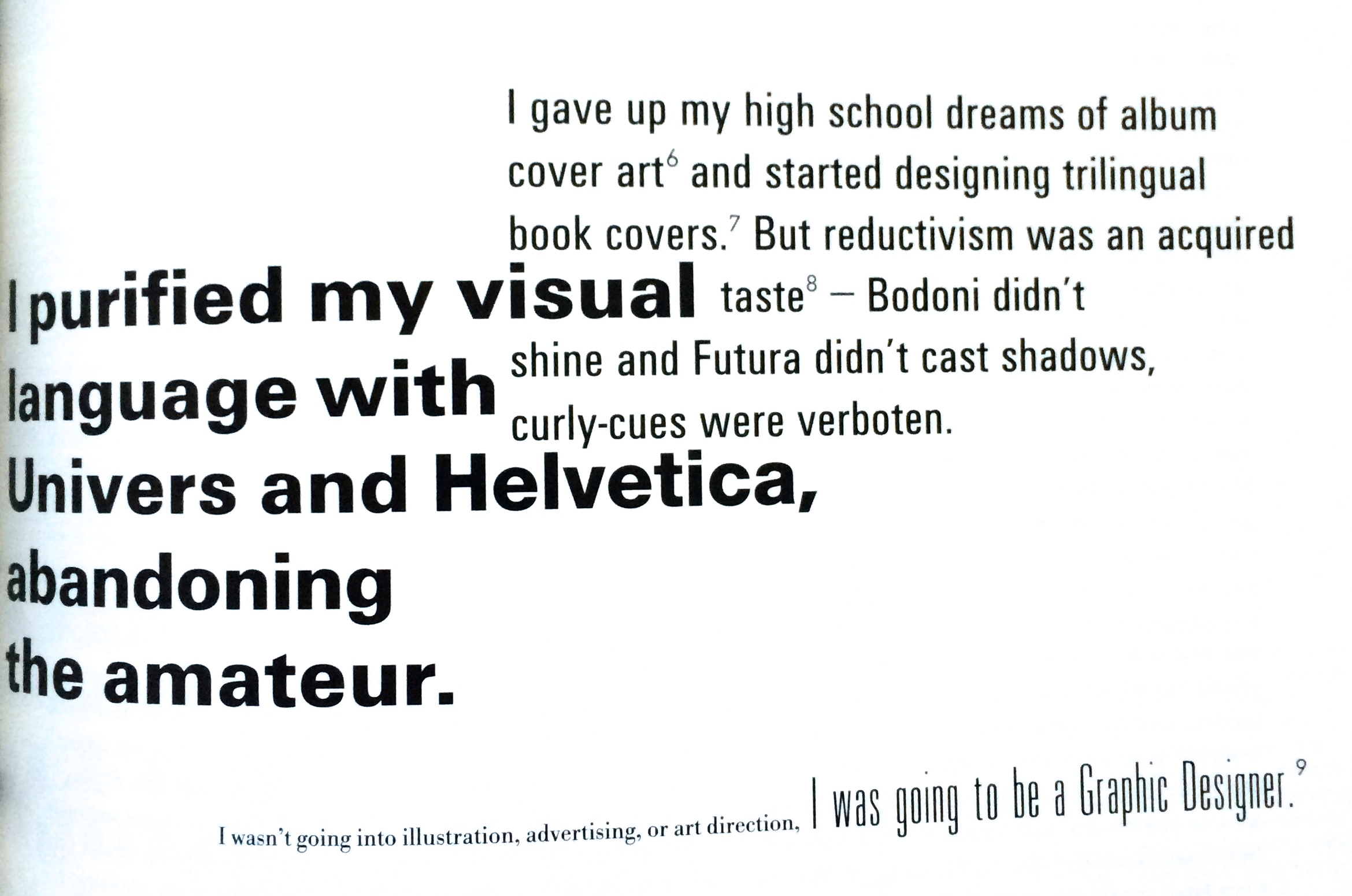Lift and Separate is a lovely tactile journal, very much in the spirit of Emigré and Eye. It was published circa 1993 by the Herb Lubalin Study Center. What I really like, is the piece on vernacular and the journey from drawing fanciful letters in a note book to purging the ornaments and being a 'proper' designer. That shift to proper type and the favouring of Univers and Helvetica over all else. I think a lot of designers went/go through this, only to discover that the objective purity they believed those fonts provide isn't real, it's just another stylistic choice. As I've gotten older I've grown to love hand drawn, found and everyday type. The myriad of visual languages that exist outside the strict world of acceptable 'current' graphic design. There's something wonderful about the bad, broken and 'ugly' - but I do still love Univers.
Emigré the journal issues (33-49 bound)
I have a few loose issues of Emigré so when the bound volumes were released I had to grab them.
These are from the more theoretically engaged period, epitomised by the mouthpiece series. Great to look back on and see the issues that raged and in many cases are still raging, it's like a graphic design time capsule - awesome.
And here's a bunch of close ups.
http://www.emigre.com/
Issue 26 of Emigré magazine
This is one of the later issues (No. 26 Spring 1993) of Emigré that was published in the large format. Fairly soon after this it went to a smaller journal like publication. Interestingly this coincided with a shift in graphic design writing. A move away from pure design expressions and visual exuberance to critical theory and the rapid intellectualising of graphic design. The digital revolution was in full swing and digital type and challenging the traditional rules was the norm. Endless debates raged about legibility and the 'cult of the ugly' and we had a new set of design superstars such as David Carson (End of Print was published 1995). It was an interesting time to be a design student.
The large format versions reflect the visual heyday of Emigré and most of the items in this earlier post are from that period. They focus on the design practice and artefacts rather than the discourse - they don't ignore the debates, rather they are about showing them, not waxing lyrically upon them. The smaller format editions cover the design debates in a more writerly fashion, a more traditional journal. It was a period when graphic designers were very actively and intellectually engaged with their work and it's impact. I have the bound volumes from the small journal (issues 33-49) and will post about them some time in the near future.
Dot Dot Dot magazine
This is Dot Dot Dot or ... or maybe even ellipsis. It's the first issue of a graphic design journal started in 2000 that ran until January 2011. It was the brainchild of Peter Biľak and Stuart Bailey and as Peter puts it, it was an "after-hours magazine, originally centred around graphic design, later broadening in scope to interdisciplinary journalism" more here on Peter's site.
This first addition has an introduction by Max Bruinsma and is linked the Jan van Eyck Akademie, Maastrict. A school that had some interesting people and programmes, especially around socially aware design and the European ideal. This issue is almost a meta discourse as it concentrates on Graphic Design Journals, featuring pieces on Emigré, Eye, Form + Zweck and Octavo. I particularly like the 'Encyclopædia of Graphic Design Periodicals' which is also featured on the back cover.
Here's a link to an excellent new magazine from Peter Bil'ak: Works That Work Magazine
Semiotext(e) Architecture
This is Semiotext(e) Architecture from 1992. It's a massive (44x28 cm) landscape orientated collection of essays, experiments and ideas focussed on design, architecture and theory. I included the shot with my feet just to show it's size when opened. Totally unmanageable and doesn't fit on any of my bookshelves - which makes me love it even more.
I have three books from the independent publisher Semiotext(e); Architecture, USA and Radio - but this is visually the richest. It's a black and white production, which emphasises the dark and dirty style of the era and also makes it feel very underground and almost fanzine like. It's full on 'cult of the ugly' stuff and touches on the design for designers trend of the time, but also is very reflective of the DIY culture vibe (more here). For me this isn't the greatest piece graphic design but the variety of the content, the scale and the richness of the textures makes it rather special.































































